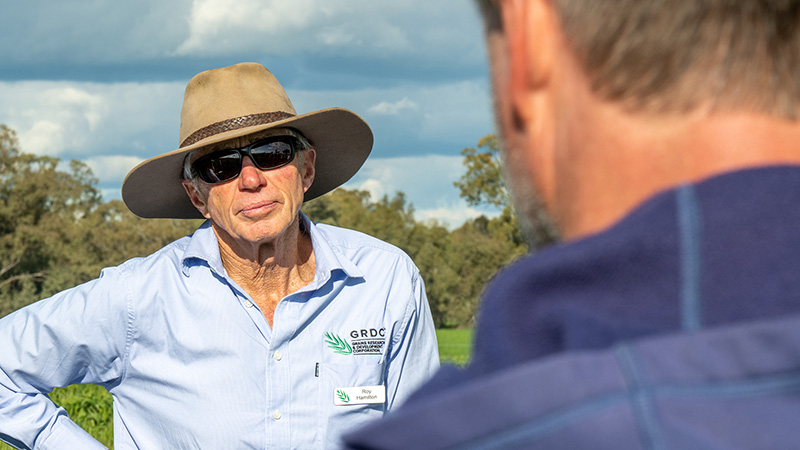Riverina grain grower Roy Hamilton understands the challenges that come with working on-farm, the veteran grower has known some ‘near misses’ in his time and is an outspoken advocate for farm safety.
The Grains Research and Development Corporation northern region panel member was sharing his experiences this week as part of the national Farm Safety Week. Running from July 16 to 23, the week is designed to raise awareness for farm safety.

Roy Hamilton is sharing his experiences ahead of Farm Safety Week (July 16-23). Photo: GRDC
This year GRDC is backing the messaging encouraging grain growers across the country to take a closer at look at what they can do on-farm to reduce risks associated with farm machinery and equipment.
GRDC invests in research, development and extension to create enduring profitability for Australian grain growers and is this year highlighting the importance of the safe use of farm plant and machinery.
According to a recent report released by Agrifutures and AgHealth Australia, agriculture continues to be one of the most dangerous industries to work in, prompting the call for growers to stop and think of how they can prioritise the safety, health and wellbeing of themselves and others.
This year’s focus on farm machinery is especially timely, as the report highlighted that on the first half of 2022 alone, 21 on-farm deaths were reported, with quads being the most frequent agent of injury causing death.
Since 2001, more than 1650 people have lost their lives in farm accidents across Australia, with tractors and quads being the leading cause of fatal injury and involved in 40 per cent of all deaths.
GRDC northern panel member and founding committee member of the Riverine Plains farming systems group, Roy Hamilton, operates a 4400ha mixed family farming enterprise near Rand in NSW’s Riverina.
Roy says that after spending 50 years in the industry, he sees the value in farm safety now more than ever.

Photo: FarmSafe Australia
“When making safety decisions, it’s important to slow down, and sometimes it’s even more important to know when to call it quits,” Mr Hamilton says.
“If you’re at the end of the day, you’re tired, it’s getting dark, and you’re trying to get a tractor out of a bog, it can seem like the most important thing in the moment is to get the job done, but really, the most important thing is getting home safely to your family.”
According to Rural Safety Health Alliance (RSHA) representative Pauline Brightling, agriculture is an especially dangerous industry during ‘high pressure’ periods.
“Growers have such a high demand job that is coupled with low control variables such as weather and market conditions, creating higher than average workplace stress and pressure,” she says.
“It’s the high-pressure periods such as sowing and harvest, which are the hardest but also the most essential time to stop and reflect on your on-farm safety measures.
“We are passionate about doing the research that will connect farmers with resources that help with safe work practices and inform them on how to make better work health and safety decisions on-farm.
The RSHA is a partnership led by AgriFutures Australia in collaboration with GRDC and six other Research and Development Corporations (RDCs) including the:
- Australian Eggs,
- Australian Pork Limited,
- Australian Wool Innovation,
- Cotton Research and Development Corporation,
- Dairy Australia,
- Meat & Livestock Australia.
GRDC’s industry and government relations manager Maxie Hanft says GRDC supported a collaborative approach to promoting on-farm risk mitigation strategies for grain growers, particularly those with mixed-farming operations.
“We’re proud to be involved in cross-sector investments such as RSHA, where the goal is to build the capacity to improve work health and safety in all ag industries, not just grains,” she says.
“As an industry, it’s important to talk about safety and be aware of the statistics. We need to be focused on the actions we can take to reduce risk factors with practical safety solutions, to ensure that those living and working on farms are safe.
“Research and development in this space is especially important. We want to support growers in accessing the latest resources and information so that we can begin to turn the industry’s work health and safety trends around.”

























































